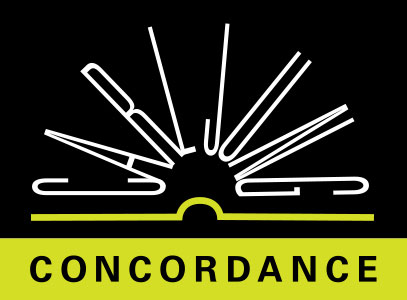Dream:
Transform Animals into Men
A square space with complicated ceremonies going on in it, the purpose of which is to transform animals into men. Two snakes, moving in opposite directions, have to be got rid of at once. Some animals are there, e.g., foxes and dogs. The people walk round the square and must let themselves be bitten in the calf by these animals at each of the four corners (cf. fig. 118). If they run away all is lost. Now the higher animals come on the scenebulls and ibexes. Four snakes glide into the four corners. Then the congregation files out. Two sacrificial priests carry in a huge reptile and with this they touch the forehead of a shapeless animal lump or life-mass. Out of it there instantly rises a human head, transfigured. A voice proclaims: “These are attempts at being”
Brother-sister pair in the “bath of life”
The two figures are being bitten in the calf by dragons while the lunar water, fertilized by the divine breath, is poured over their heads.Theatrum chemicum Britannicum (1652)
DREAM COMMENTARY
One might almost say that the dream goes on with the “explanation” of what is happening in the square space. Animals are to be changed into men; a “shapeless life-mass” is to be turned into a transfigured (illuminated) human head by magic contact with a reptile. The animal lump or life-mass stands for the mass of the inherited unconscious which is to be united with consciousness. This is brought about by the ceremonial use of a reptile, presumably a snake. The idea of transformation and renewal by means of a serpent is a well-substantiated archetype (fig. 070) . It is the healing serpent, representing the god (cf. fig. 203) . It is reported of the mysteries of Sabazius:(A golden snake is let down into the lap of the initiated and taken away again from the lower parts). Among the Ophites, Christ was the serpent. Probably the most significant development of serpent symbolism as regards renewal of personality is to be found in Kundalini yoga. The shepherd's experience with the snake in Nietzsche's Zarathustra would accordingly be a fatal omen (and not the only one of its kindcf. the prophecy at the death of the rope-dancer)
CW12 ¶ 184Pagan rites of transformation with serpents in Middle Ages
Gnostic Design
The Chnuphis serpent with seven-rayed crown
Left: The Chnuphis serpent. Right: The lion-headed, twelve-rayed serpent, over an altar-stone.Gnostic gem and amulet
THE “SHAPELESS LIFE-MASS”
The “shapeless life-mass” immediately recalls the ideas of the alchemical “chaos,” the massa or materia informis or confusa which has contained the divine seeds of life ever since the Creation. According to a midrashic view, Adam was created in much the same way: in the first hour God collected the dust, in the second made a shapeless mass out of it, in the third fashioned the limbs, and so on (fig. 071)
CW12 ¶ 185Creation of Adam from the clay of the prima materia
Schedel, Das Buch der Chroniken (1493)
A CIRCUMAMBULATIO IS NECESSARY
AS EXCLUSIVE CONCENTRATION ON THE CENTER
But if the life-mass is to be transformed a circumambulatio is necessary, i.e., exclusive concentration on the centre, the place of creative change. During this process one is “bitten ” by animals; in other words, we have to expose ourselves to the animal impulses of the unconscious without identifying ourselves with them and without “running away;” for flight from the unconscious would defeat the purpose of the whole proceeding. We must hold our ground, which means here that the process initiated by the dreamer's self-observation must be experienced in all its ramifications and then articulated with consciousness to the best of his understanding. This often entails an almost unbearable tension because of the utter incommensurability between conscious life and the unconscious process, which can only be experienced in the innermost soul and cannot touch the visible surface of life at any point
CW12 ¶ 186CLEAR PARALLELS IN THE
The focusing of attention on the centre demanded in this dream and the warning about “running away” have clear parallels in the opus alchymicum: the need to concentrate on the work and to meditate upon it is stressed again and again
CW12 ¶ 187THE TENDENCY TO RUN AWAY
The tendency to run away, however, is attributed not to the operator but to the transforming substance. Mercurius is evasive and is labelled servus (servant) or cervus fugitivus (fugitive stag). The vessel must be well sealed so that what is within may not escape. Eirenaeus Philalethes says of this servus: “You must be very careful how you manage him, for if he can find an opportunity he will elude your vigilance, and pass through, and leave you stuck in a heap of misfortunes.” It did not occur to these Philosophers that they were chasing a projection, and that the more they attributed to the substance the further away they were getting from the psychological source of their expectations
CW12 ¶ 187ARRANGEMENT OF THE SNAKES
IN THE FOUR CORNERS
The arrangement of the snakes in the four corners is indicative of an order in the unconscious. It is as if we were confronted with a pre-existent ground plan, a kind of Pythagorean tetraktys. I have very frequently observed the number four in this connection. It probably explains the universal incidence and magical significance of the cross or of the circle divided into four. In the present case the point seems to be to capture and regulate the animal instincts so as to exorcise the danger of falling into unconsciousness. This may well be the empirical basis of the cross that vanquishes the powers of darkness (fig. 073)
CW12 ¶ 189Deliverance of man from the power of the dragon
Codex Palatinus Latinus 412 ( 15th cent.)
